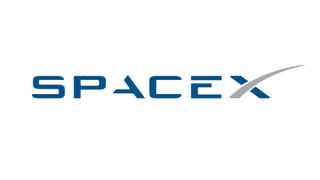FCC Greenlights SpaceX’s Broadband Satellite Plan
The FCC has authorized Elon Musk’s SpaceX to move ahead with an ambitious plan to offer broadband service via a constellation of 4,425 low earth orbit (LEO) satellites.

FCC said the action would pave the way for increasing access to reliable, high-speed internet services in the U.S. and boost competition with other providers.
The FCC granted approval for those satellites to use frequencies in the Ka (20/30 GHz) and Ku (11/14 GHz) bands with conditions that SpaceX follow Commission rules and to put up protections for other operations in those bands.
The green light to SpaceX follows other recent approves given by the FCC to OneWeb, Space Norway and Telesat to provide broadband service in the U.S. using a next-generation of non-geostationary satellite systems.
The approval also comes a bit more a month after SpaceX launched two demonstration Starlink satellites tied to its LEO broadband satellite initiative.
It also marks another step in what has become a broadband space race of sorts in a market that is heating up and growing.
RELATED: Broadband Space Race Heats Up
Multichannel Newsletter
The smarter way to stay on top of the multichannel video marketplace. Sign up below.
Viasat, for example, recently launched 100 Mbps (downstream) service that uses ViaSat-2, a high-capacity GEO satellite launched last year. EchoStar’s Hughes Network Systems division has reached the preliminary design phase on Jupiter 3 (EchoStar XXIV), another high-capacity satellite that will be capable of delivery 100 Mbps or more. Eutelsat Communications has tapped Tyvak International to build a LEO satellite that’s designed to support Internet of Things-focused apps and services.
SpaceX’s plan met some opposition. Telesat Canada and Viasat, for example, filed petitions to deny SpaceX’s application over concerns about the potential for in-line interference. EchoStar and Hughes Network Systems also brought up concerns about risks of interference to space-to-Earth links that Hughes uses in the U.S.
OneWeb asks for a condition that SpaceX’s application be conditioned by the maintaining a 125 kilometer altitude buffer zone between its constellation and others. “Imposition of such a zone could effectively preclude the proposed operation of SpaceX’s system, and OneWeb has not provided legal or technical justification for a buffer zone of this size,” the FCC said.
While SpaceX agreed that, given the number of satellite systems that will be launched in the coming years, physical coordination between systems could be required. However, it stressed that the tolerances of specified orbital parameters provide enough flexibility to achieve necessary spacing between satellites.
The FCC said its technical review found that sharing will be possible between the SpaceX system, the OneWeb system, and others proposed in all the bands requested by SpaceX, adding that Earth stations communicating with the SpaceX constellation will have directional antennas.
Still, a statement from FCC Commissioner Jessica Rosenworcel outlined some concerns that while these new satellite broadband initiatives are “undeniably exciting,” the regulatory frameworks around those efforts are “dated.”

She called on a “comprehensive polity to mitigate collision risks” amid these plans to launch thousands of LEO satellites, and stressed that the FCC should coordinate more closely with others in the government “to figure out what our national policies are for this jumble of new space activity.”
On that point, she said the FCC should have a seat at the table at the National Space Council as it considers policy changes to promote the growth of the commercial space industry.
“Cutting the FCC out of this discussion is an unseemly mistake—and one that deserves a fix,” she stated.
